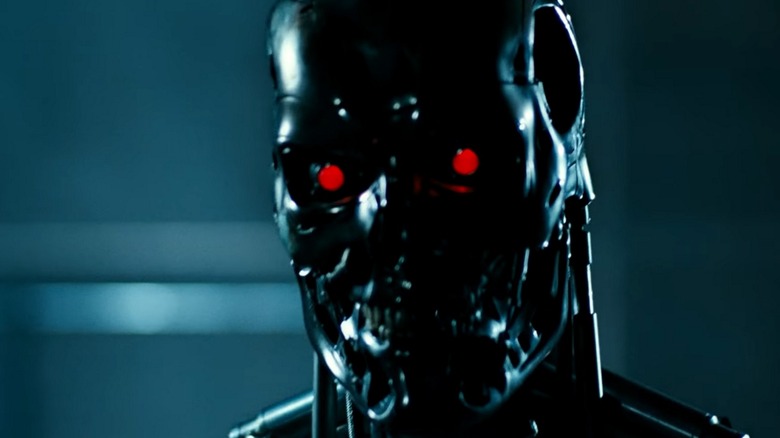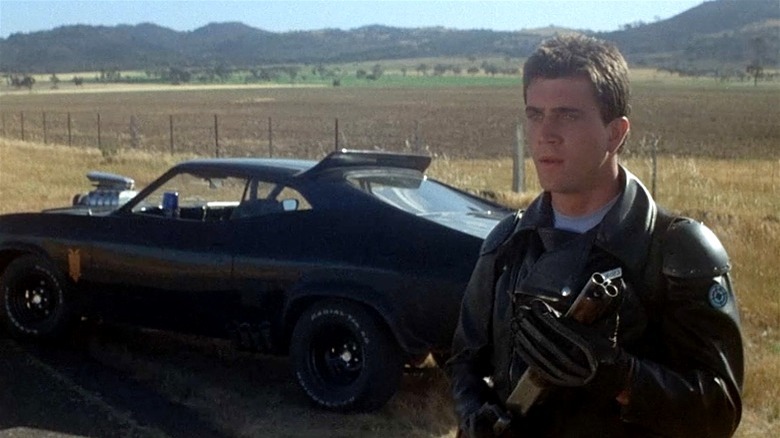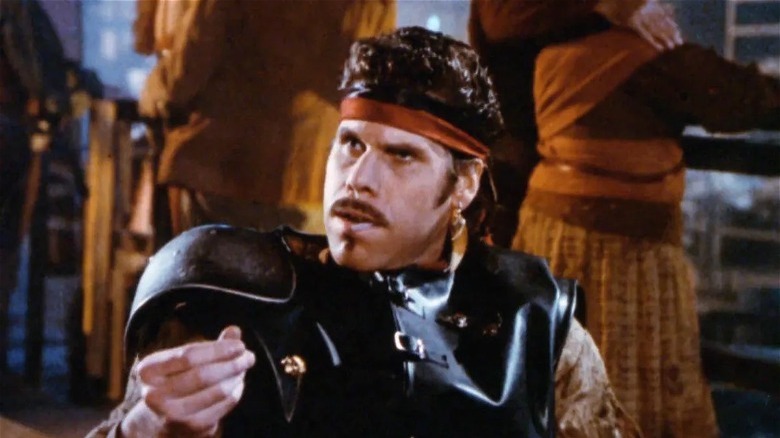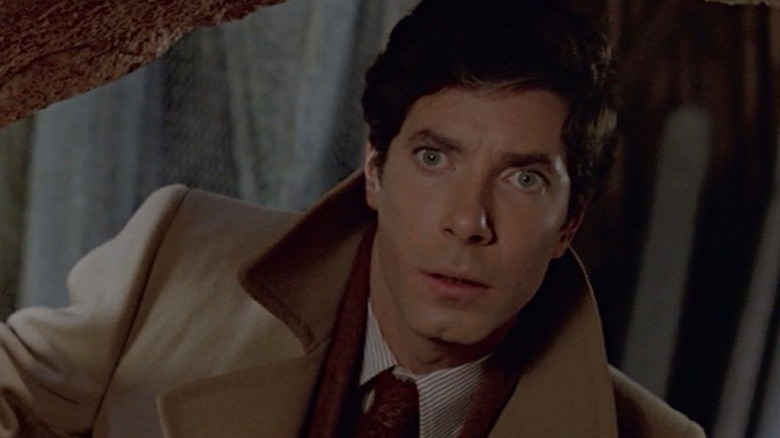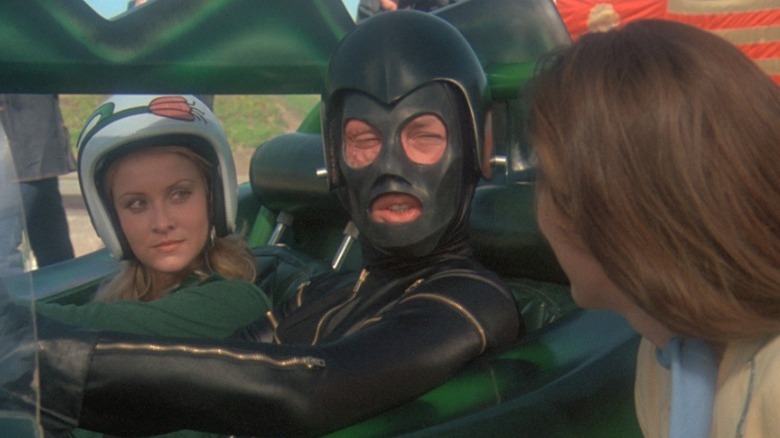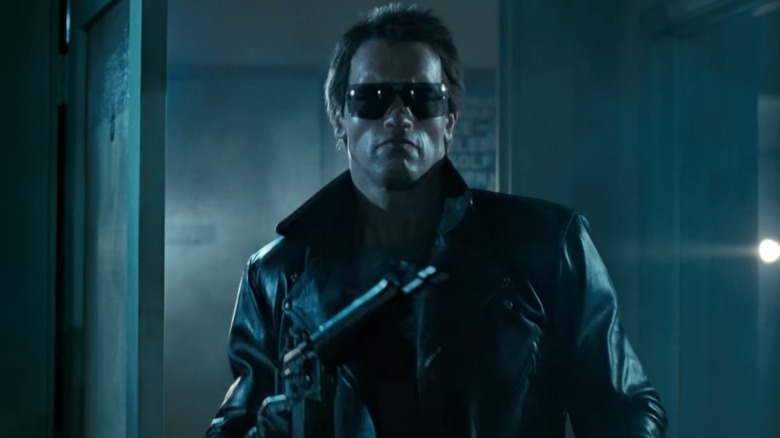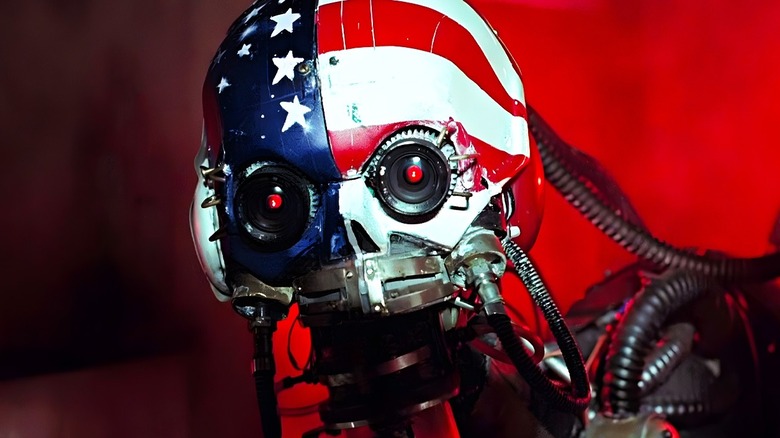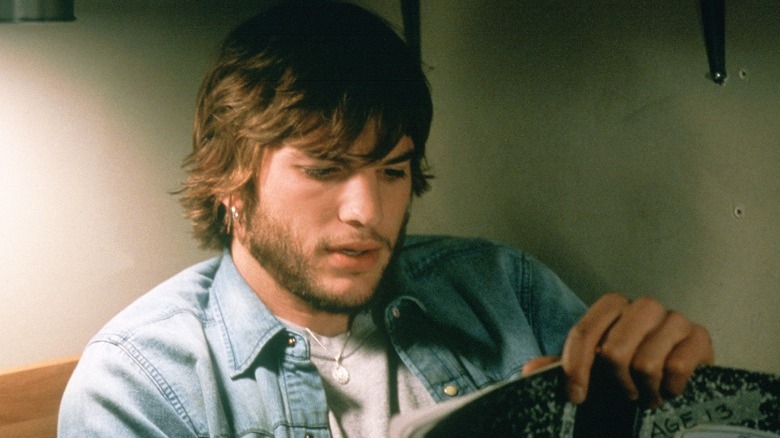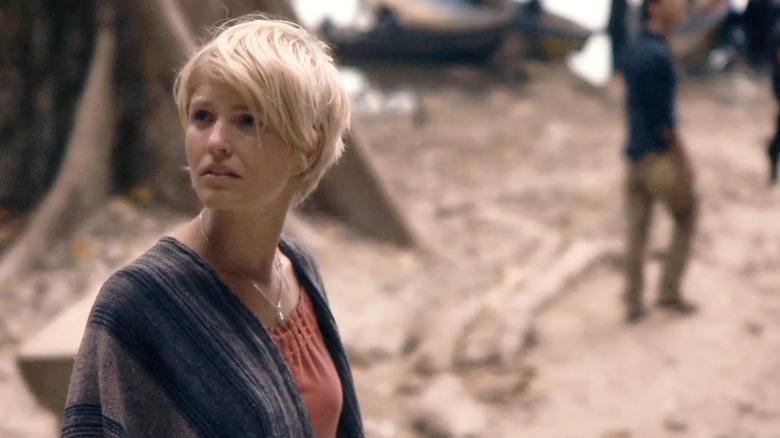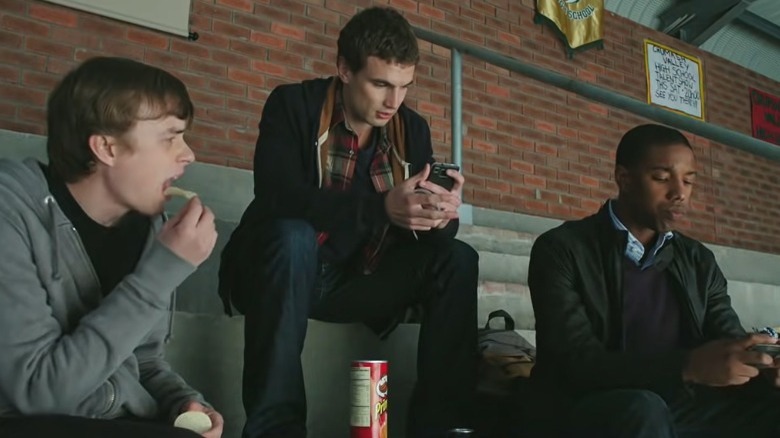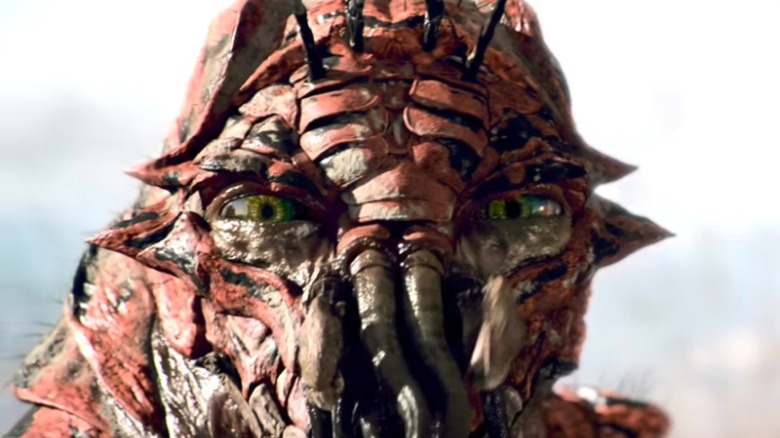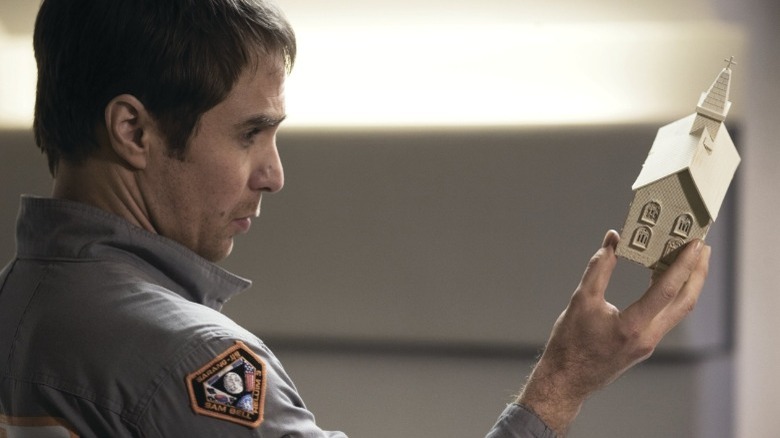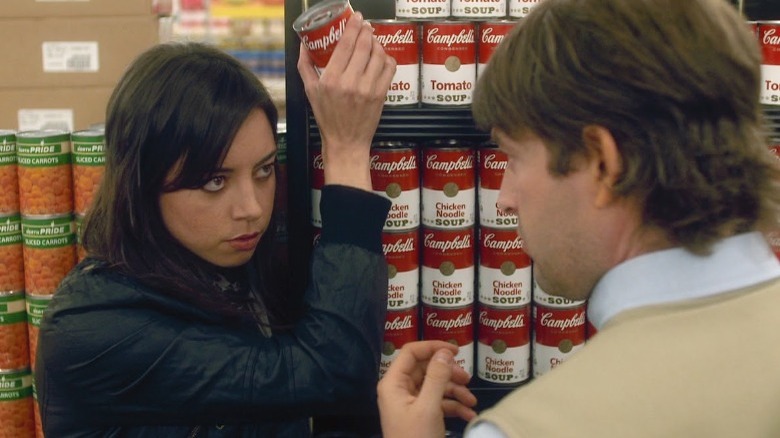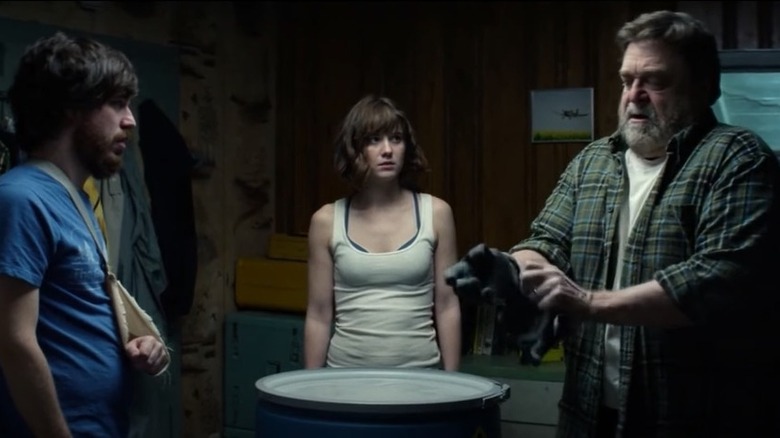Low Budget Sci-Fi Movies That Made Millions
Big-budget science fiction is a pretty new development. Our original blockbusters, "2001: A Space Odyssey," and "Star Wars: A New Hope," only had budgets of around $10 million. In comparison, "Star Wars: The Force Awakens" got to work with roughly $300 million. With the larger budget comes fancier effects, bigger casts, and an amplified "Wow!" factor. That much fun is hard to pass up.
Science fiction is a genre that rewards the imagination, and that's as true for the creators that make our favorite films as it is for the audience. Sometimes, that imagination does its best work while keeping an eye on the bottom line. It's always been possible to make terrific science fiction classics on the cheap. What we're about to highlight are some of those cost-savvy movies and their big returns at the box office. Bearing in mind a lot of boring economic factors, any movie made within the last 30 years is considered low budget if they cost about $20 million bucks to make. There's one exception, and it's a good one. The lesson here is simple: Bigger doesn't guarantee better.
Mad Max
George Miller went from medical school to "Mad Max," crafting his apocalyptic sci-fi road warrior for about $200,000. His star was a then-unknown Mel Gibson, who took home a $15,000 paycheck for his role as Max Rockatansky. The worldwide return was $99,750,000. Decades later, we're still in love with Miller's vision of a ruined world where our humanity still matters.
As we'll find with most films on this list, that slim budget is almost entirely present on the screen. Besides Max, the quiet but furious avenger, and a small cast of baddies that includes Hugh Keays-Byrne as the Toecutter, the cars and crashes of "Mad Max" take the spotlight. Miller filmed his high-octane scenes on streets his crew secretly closed off — without permission from officials. The sheer coolness of what he was doing led the local police to help him with road safety. The results are unforgettable. Gibson became a star, and Miller still makes movies his way — or the highway.
The Ice Pirates
Director Stewart Raffill has a wild career that includes some of the most memetic moments in film. He's the guy that made the godawful kid's movie "Mac and Me," best known as the source of Paul Rudd's infamous running gag. But Raffill has a gift for adventure movies, and in 1984, MGM pulled him in to take over a troubled sci-fi adventure with a result that out-"Spaceballs" Mel Brooks himself.
"The Ice Pirates" was built from the scraps of a script for a project called "The Water Planet," and a $9 million budget. From Angelica Huston to Ron Perlman, the cast is a who's who of today's best oddballs. Pulling in over $13 million worldwide and drawing the ire of critics still high on the promise of serious sci-fi, its real blockbuster success is becoming zanier and funnier with time. A deliberate swerve around "Star Wars" and its serious intergalactic war, "The Ice Pirates" is a swashbuckler in space. The jokes are on the level of the Zucker Brothers, skirting the line of bad taste with effortless glee. You don't need money to be funny in space.
Scanners
David Cronenberg isn't a big-budget kind of guy. The body horror films that he's most famous for rarely cost more than $15 million, and that includes his version of "The Fly." The 1981 film "Scanners" put Cronenberg on the map for mainstream audiences, a delightfully icky cult classic that was designed to make heads explode.
Made for about $4 million Canadian, the worldwide return was a cool $14 million. That was the jolt Cronenberg's profile needed in the industry, and he was even offered a gig directing "Star Wars: Return of the Jedi." With "Scanners" focusing on a rebellious group of psychics fighting to take down some evil corporate masterminds armed with psychics of their own, it's easy to see how Cronenberg got on George Lucas' list. However, Cronenberg preferred to keep doing things his way. His next film would be the equally cheap but harder-to-sell "Videodrome." Cronenberg's films rarely do big numbers at the box office, but they definitely take hold of our minds.
Death Race 2000
Never underestimate the power of a good car crash. Four years before Max Rockatansky sped down Australia's apocalyptic freeways, our favorite cheesy movie king, Roger Corman, produced "Death Race 2000." Directed by Paul Bartel and given a budget of about $300,000, the film features a collection of surprising '70s stars like Sylvester Stallone and David Carradine. A glorious mess that puts aside most of its social commentary for silly shocks, "Death Race" brought home over $5 million worldwide and parked itself in our hearts.
This dystopian predecessor to "The Cannonball Run" is gleeful in its violence. There's a corny resistance plot based on the American Revolution going on while race car drivers with wrestler personas tear across the United States. What we see of the new US makes it pretty clear the rebellion is needed. Pedestrians are disposable, martial law is in effect, and the gory gladiator race is the regime's idea of bread and circuses.
The Terminator
When you think of "The Terminator," you might think of Arnold Schwarzenegger walking in the scariest, most intense way possible. You probably think of a chrome skull becoming visible under bloody gore and lots of guns. With a blockbuster sequel that pioneered new CGI special effects, it's also easy to think that "The Terminator" has always been a big-budget king, but that's not the truth.
Rewatching the original "Terminator" reminds us that it's a tightly-paced movie that feels so much bigger than it is. Made for just $6.4 million, James Cameron puts it all into intense scenes and terrifying stop motion animation that brings the skeletal T-800 to life. Seen in both Kyle Reese's glimpses of the future and the final showdown in a steel factory, the animation was just one part of how Schwarzenegger, effects expert Stan Winston, and James Cameron made this cyborg into one of the coolest villains of the last century. "The Terminator" made $78 million worldwide. It also made pop culture history.
Hardware
Director Richard Stanley briefly clawed his way back into prominence with the scarily good Lovecraft movie "The Color Out of Space" in 2020. Derailed by the infamously bad "The Island of Dr. Moreau," his filmography is both limited and strange. His debut is a forgotten science fiction classic. "Hardware," released in 1990, is a film that pops up randomly on streaming services every few months, the sort of thing that goes half-watched on a sleepless night until you realize it's better than it deserves to be.
Made on a tight $1.5 million and returning $5.7 million in its theatrical release, "Hardware" is a true cult movie. A scrapper finds a trashed robot and brings him back to sell for parts. Unfortunately, the pile of junk is a top-of-the-line murder robot, and this dystopian future is a version of Judge Dredd's lawless Mega-Cities — but without any judges. The budget goes into an almost limitless amount of gore and violence that overshadows a theme about mindlessly buying into an authoritarian society.
The Butterfly Effect
Time travel stories can be a sneaky way to explore some big topics on a limited budget. By sticking with certain periods, there are no worries about prop-heavy sets. It worked for "Quantum Leap." "The Butterfly Effect" is as frugal as that classic series with how its time travel operates but with a plot that's like a depressing version of the sci-fi romance, "Somewhere in Time."
Ashton Kutcher plays Evan, a man who realizes he can go back into his past by reading his old journals. He turns his life into a game of "Choose Your Own Adventure," only the more he changes things up, the more he damages his mental stability. It's probably the darkest movie Kutcher's ever done. With a $13 million budget and few special effects, "The Butterfly Effect" returned almost $97 million at the box office. This dreary but effective thriller won a second life with its home video release and a director's cut ending that's even darker.
Monsters
Nature can be the perfect backdrop for a film. Full of beautiful color and with enough shadow to help a smart director imply anything, the forests and jungles of our world are perfect for everything from thrillers to horror movies. For 2010's "Monsters," director Gareth Edwards, his two-person cast of Scoot McNairy and Whitney Able, and a shoestring film crew roamed Central America's wilderness for three weeks. When the shoot wrapped, Edwards went home and worked by himself to piece together the visual effects his story needed.
"Monsters" cost only $500,000 to make. The worldwide box office return was a cool $5 million. For Gareth Edwards, his reward would also include helming the cross-culture MonsterVerse reboot of "Godzilla." But before the king of the monsters retook the world, Edwards' story of two people traversing the wildest quarantined zone since "Stalker" stole our hearts. It's proof that a great film can still be made with basic resources.
Chronicle
"Black Panther" star Michael B. Jordan wasn't yet a big name in 2012 and neither was director Josh Trank. Together, with newcomers Dane DeHaan and Alex Russell and a sleek budget of $12 million, they made the surprise sci-fi hit, "Chronicle." A found-footage-styled film about some tough topics, it's the best homage to the classic "Akira" that a Western director has made so far. Audiences agreed. The film raked in a box office take of $126 million.
Like "Akira," the real roots of the new superpowers these kids discover are pretty vague. For "Chronicle," it's probably aliens, but the real meat here is how these kids adapt to their new powers. There are some hard looks at what abuse can do to a young mind. It's hard to blame DeHaan's Andrew for feeling the way he does, but that can't excuse what he unleashes on innocent people. A deceptively upbeat film that turns grim and thoughtful in its last act, "Chronicle" uses its budget for some neat effects and a perfect cast.
District 9
With a budget of $30 million, "District 9" pushes the boundaries of what can reasonably be called a small-budget film, but this South African production with a little-known director, a cast of unknowns, and an effects studio that had yet to work on anything on this scale blew up expectations worldwide. It made $210 million, became a viral sensation, and etched a call for the parental alien Christopher Johnson to return home into its audience's hearts.
Neill Blomkamp buffs up his six-minute film "Alive in Joburg" into a feature that's just shy of two hours. With that comes a brutal exploration of racism, bigotry, and private militarization. Like the short film, "District 9" is presented as a documentary that follows the day's work of relocating Johannesburg's destitute alien population into what's advertised as a slightly nicer prison camp. Sharlto Copley, as the wimpy Wikus van de Merwe, is gruesomely forced to realize what it's like to be on the other side of the fence. This movie still looks fantastic for its budget, with its alien protagonists feeling more real and empathetic than the mercenaries that hunt them.
Moon
"Moon" isn't shot in black and white, but it's so minimalist that it might as well have been. The premier outing for director Duncan Jones, this $5 million movie was the film in which actor Sam Rockwell revealed he could be much more than an excellent ensemble actor. With the bulk of this hour-and-a-half-long movie spent focused on the lonely Sam Bell, Sam Rockwell carries the movie with sorrow and dignity.
With a box office return of $9.7 million, "Moon" may not qualify as a blockbuster, but its cold lunar setting, achieved with studio sets, models, and budget effects studios, is a testament to how creative effort is more valuable than money. "Moon" is also a NASA favorite, touching on some neat stuff the space agency is still working on. It's a movie that's going to stay on a lot of science fiction best-of lists for years to come and all for a reasonable price.
Ex Machina
Alex Garland is sci-fi's new John Carpenter. He doesn't need a blockbuster budget to make a film that audiences can't forget. His directorial debut, "Ex Machina," proved that with a budget of a mere $15 million. Without the use of greenscreen, Alicia Vikander becomes Ava, a female robot designed to push the limits of artificial intelligence and artificial emotions. Domnhall Gleeson, as Caleb, is sort of her personal Turing test. He's an engineer invited to a reclusive genius' retreat, and that genius, Nathan, is played by our hot new fave, Oscar Isaac.
"Ex Machina" earned just shy of $37 million, becoming one of A24's first big success stories. It also helped boost A24's presence at the 2016 Academy Awards, picking up a win for best visual effects and a nomination for Alex Garland's original screenplay. As for Oscar Isaac, who puts in a creepy good show as an insulated billionaire who treats women like machines? It sure seems like he's been doing pretty well for himself ever since.
Safety Not Guaranteed
Memes are a huge part of Internet culture, and they've been thriving since well before Caturday became an unofficial international holiday. In the '90s and early 2000s, one, in particular, gripped everyone from FARK to Jay Leno. It was a gag ad that read, in part: "Wanted: Somebody to go back in time with me. This is not a joke." It ended with the ominous words "Safety not guaranteed."
Colin Trevorrow may be the director behind the new era of "Jurassic Park," but his writer is his friend Derek Connolly. Connolly is also the man who tracked down the magazine employee who wrote that strange ad and built a script around it. "Safety Not Guaranteed" is a sweet and strange comedy about a pair of journalists who are equally enthralled by the ad. The answers about who's trying to go back in time and why have some timely entanglements. Made for only $750,000, it brought in over $4 million at the box office. There are only a few special effects but a priceless amount of heart in this movie.
10 Cloverfield Lane
The "Cloverfield" franchise is an attempt to build a connected world from one great monster movie and a couple of independent scripts that got reworked to tie in. It's a concept that allows for some really neat ideas, and with that comes "10 Cloverfield Lane." The feature film debut of "Prey" director Dan Trachtenberg, this tightly-paced thriller was built from a script called "The Cellar," which was passed around Hollywood as one of the hottest scripts of 2012.
With a budget of around $13 million, this movie spends most of its time up close and personal with a three-person cast stuck in an underground shelter. Something terrible is happening outside, but John Goodman, in his scariest role ever as the doomsday prepper Howard, won't let anyone out to figure out the truth — or let anyone in to help them survive. With a controversial twist that's as good as anything "The Twilight Zone" has to offer, "10 Cloverfield Lane" brought $110 million back home to its creepy concrete bunker.
